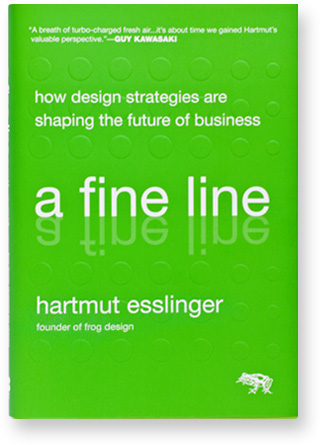What if you suddenly had to connect with your customers in such a way that encouraged them to help the environment? I believe that your organization could develop a number of thoughtful and successful approaches. I also believe that the lessons learned would undoubtedly carry over to all of your other interactions with customers. If you can focus specifically on your customers in one area, you can easily do it in others.
 Hartmut Esslinger, in A Fine Line, outlines clear techniques for companies to promote sustainability in the environment. The traditional business approach has always been to produce more so that consumers will buy more and not to worry about the disposal problems. Esslinger’s company, frog design, has developed a green methodology in its design that evaluates every stage of manufacturing, from initial concept to end-usage (I encourage you to read the book, which has great ideas). I want to consider the final element of sustainability—the ability to recycle products after they are sold and used.
Hartmut Esslinger, in A Fine Line, outlines clear techniques for companies to promote sustainability in the environment. The traditional business approach has always been to produce more so that consumers will buy more and not to worry about the disposal problems. Esslinger’s company, frog design, has developed a green methodology in its design that evaluates every stage of manufacturing, from initial concept to end-usage (I encourage you to read the book, which has great ideas). I want to consider the final element of sustainability—the ability to recycle products after they are sold and used.
Can you connect with your customers in such a way that they willingly want to recycle more consistently? In order to be convincing, your solutions must appeal to customers on an economic level with good value, on a practical level that your solution will benefit them and on a convenience level that it will not be too difficult. I believe that every organization could do that if they put their minds to it. The bottom line is about creating a rewarding and emotionally rich experience for customers, with alternatives they can choose from.
The essential element is to design your processes as a caretaker, with a focus on the future. In our recycling example, the philosophy needs to be grounded in owning the entire experience—not simply believing that someone else should worry about what happens to the product after you sell it. The totality takes into account the entire customer “ecology.” Its success has to be delivered by encouraging customers, rather than “forcing” or “preaching.”
This kind of caretaker connection can focus your work to improve any process within your company. Enlightened companies understand that thinking like a customer will help them develop designful products and processes throughout their businesses, which, in turn, will make relationships with those customers “automatic” because these customer-focused systems make more sense. One success will jump-start many others. What it will teach us, whether recycling or any other customer-facing process, is that it needs to be coherent and convincing, not naïve. Transformation is gradual. It comes about in stages. It is about creating the “next better thing” rather than perfection. And that in itself is a valuable lesson.
The new approach to customer-centricity embodies being a caretaker for the customer ecology in every interaction between external customers and your organization. The organizations that will fall behind in the future will be the ones that, as Esslinger writes, “fail to devise a more innovative and creative strategic approach to their businesses and products.” This is not a save-the-world mentality, but a realization that sustainability, in an environmental sense, parallels techniques for sustainability of your organization. It depends on designing an increasingly better outcome for its users. Harness your forces to design outcomes that will benefit the customer, individually and globally, and success will happen.

Bill:
I admire your post about creating an organization that reflects green sustainability. That is clearly what our planet needs in order to provide a viable environment for our children and theirs.
What I struggle with is the question of what to do when your Best Customers do not rank environmental efficiency as the highest priority for their purchases; e.g. especially in these tough economic times, we find that customers have relaxed some of their longer-term higher order needs in order to meet their needs for short-term value. As companies, we need to address all our stakeholders, including our communities as well as our customers and employees. Yet, when customers, the lifeblood of our mission, begin to trade-off environmental sustainability for price-value, what do we do?